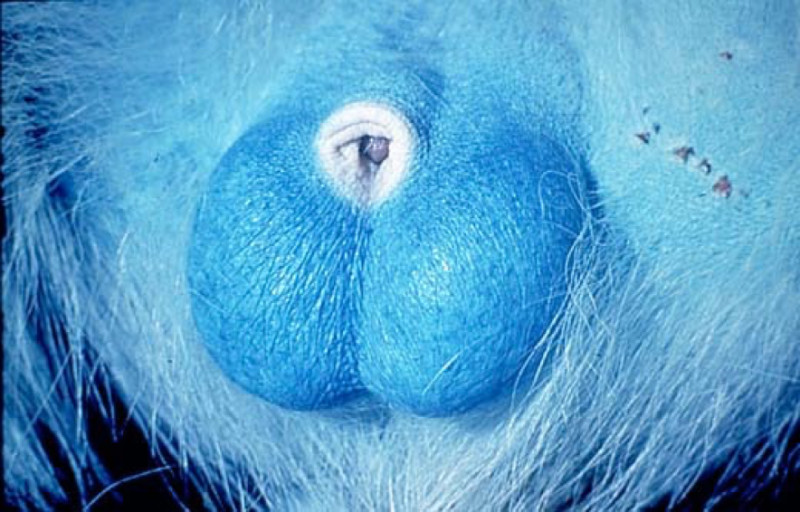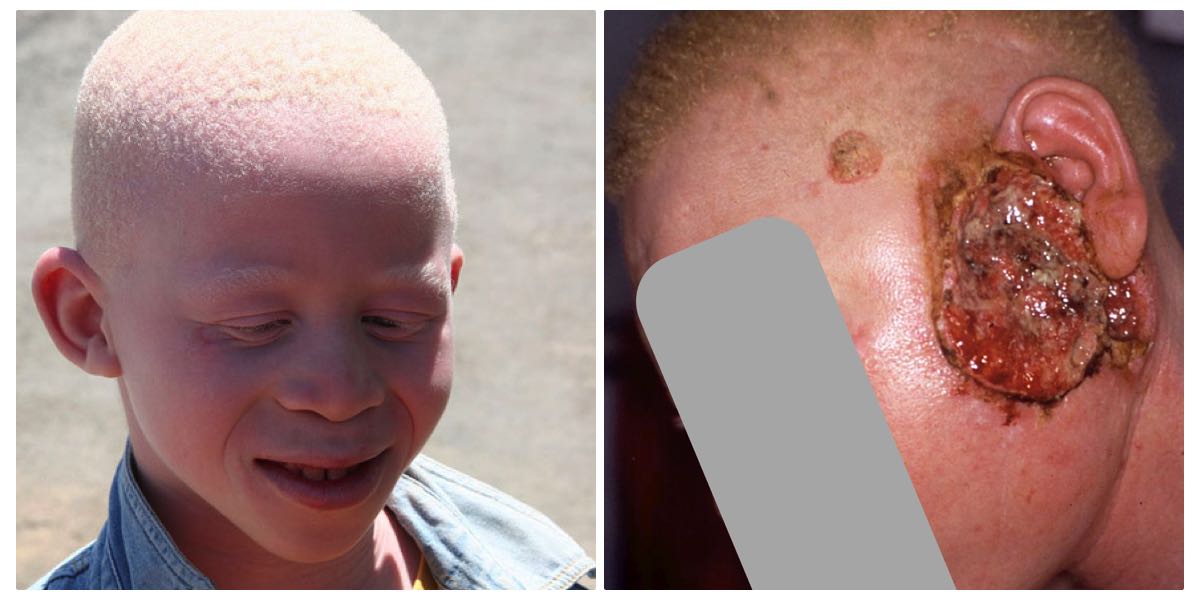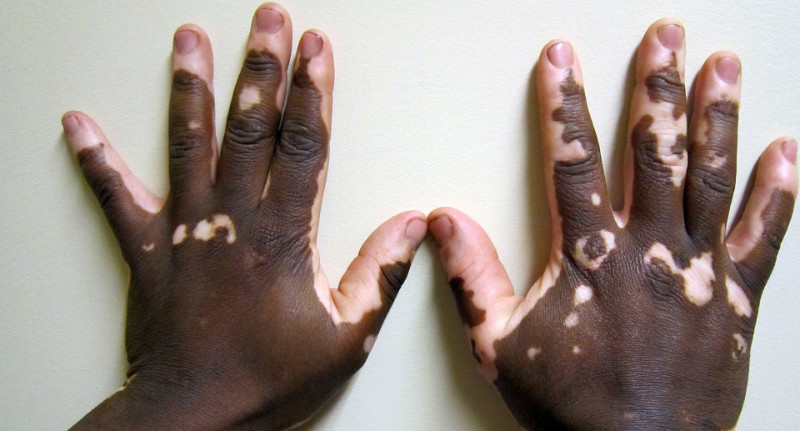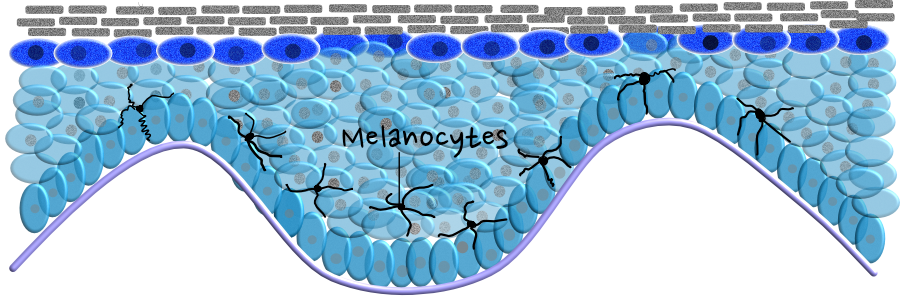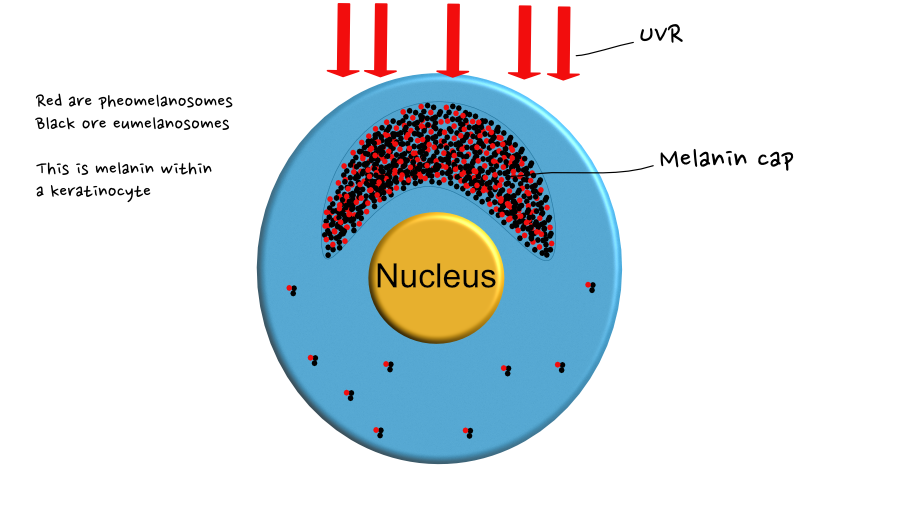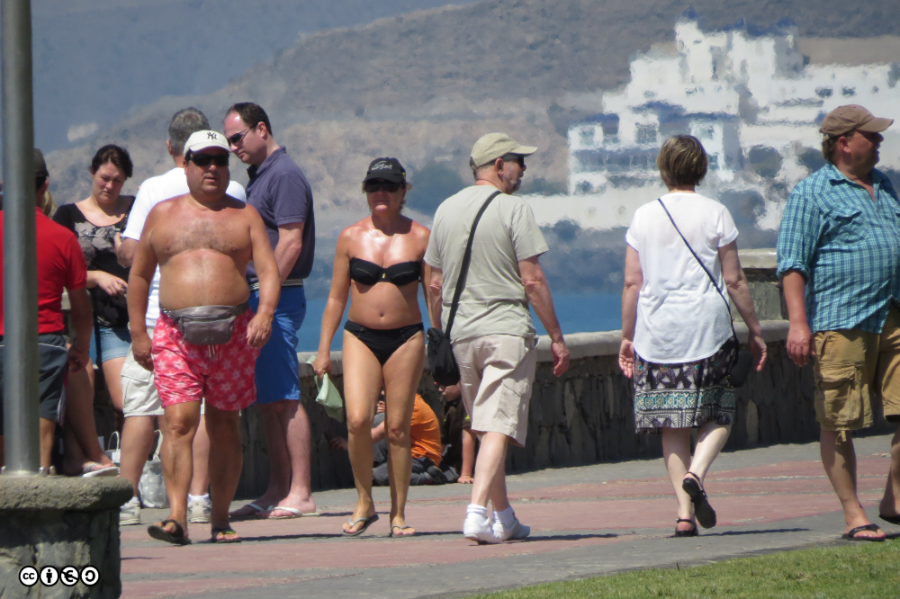In this chapter I explain the biology of human pigmentation in relation to skin cancer. I deal with the ‘how’ and the ‘why’ of melanin pigmentation. I describe how melanin is produced and the main types of melanin, and how we know that melanin protects against UVR damage and skin cancer. Finally, I explain that two weeks holiday in Spain is not just about getting tanned.
This chapter in one minute
In the previous chapter I described how and why ultraviolet radiation (UVR) was harmful to human skin. In the short term UVR causes inflammation, with erythema, pain and blistering and, in the long term, UVR causes skin cancer and possibly death. This is why DNA repair is so important.
Important though these high fidelity DNA repair systems are, they are not sufficient to protect skin against high levels of UVR. Other methods of protection are therefore required. This chapter deals with one such key protective system: that of pigmentation.
The biology of human pigmentation (15 minutes)
The Naked Ape
Balding (once) middle aged professors of dermatology know that hair is Nature’s best sunscreen
Our primate ancestors were covered in dense body hair. Dense hair, as anybody who has gone bald realises (to their cost), affords excellent protection against UVR. You might have memories of excess sun exposure as a child with burning of your shoulders and cheeks, but it is unlikely (unless you shaved your head) that you burned on your scalp. Irrespective of the colour, hair protects against UVR by blocking the path of UVR photons. So why did our human ancestors unlike our ape cousins give up on the idea of a fur coat?
The disadvantage of this evolutionary strategy should be obvious to you. Once we lost dense body hair as a blocker of harmful UVR photons another defence mechanism was necessary. The solution evolution seized upon was to find a new use for an old molecule. The molecule in question, is melanin.
Climate change (again)
An earlier period of climate change meant that our human ancestors were forced to move from the African forest to the savannah. This meant that their traditional diet was no longer available, and instead they had to learn to hunt and chase other animals over long distances for prolonged periods of time. This required changes in physiology, particularly the ability to lose body heat efficiently during bouts of sustained exercise. Eccrine sweating is critical for this— humans are more able than any other mammal to lose body heat via 3 million eccrine sweat glands. Sweating is most efficient if there is no overlying hair to limit evaporation, and therefore natural selection favoured hair loss for most body regions. Hence the epithet: (we are) the naked ape. (Image below: By Chris Hunkeler – https://www.flickr.com/photos/chrishunkeler/14802579111, CC BY-SA 2.0, Link)
Melanin: shifting from the visible to the invisible
Melanin pigments play widespread — and opposing — roles in nature. Melanin pigmentation is used as camouflage (i.e. concealing oneself); or by contrast, allowing exhibition of biological fitness as in sexual display (i.e drawing attention to oneself). For instance, the image below is the scrotum of the blue vervet monkey. The blue colour is actually due to melanin ‘deep’ in the skin, and it plays a role in sexual signalling. It is not there as a sunscreen….
The basis for both these contrasting roles (camouflage or attraction) is that melanins have particular physical properties within the visible part of the electromagnetic spectrum (i.e. humans perceive electromagnetic radiation between 400nm and 800nm as ‘visible light’ of varying colour). But melanin does not just absorb in the visible spectrum. In fact, melanin absorbs strongly in the UVR range, close to where DNA damage from UVR is maximal. Nature has taken advantage of this characteristic, and commandeered a new role for melanin.
Melanin can be described as nature’s own sunscreen, a sunscreen that is more effective than any invented by mankind.
How we know that melanin blocks UVR: Albinism
How do we know that melanin blocks harmful UVR? As ever, the clinic provides the answer. I will describe two disorders — albinism and vitiligo — before I explain some of the cell biology of melanocytes and how melanin(s) works.
Image on left:The original uploader was Muntuwandi at English Wikipedia – Transferred from en.wikipedia to Commons., CC BY-SA 3.0, Link
The above image on the left is that of an African young man who would have deeply pigmented skin — except that he has albinism. Albinism is an autosomal recessive inherited disorder in which the body is unable to synthesise adequate amounts of melanin. If we assume for the present that melanin is indeed a potent sunscreen, we can predict the clinical phenotype, as follows.
- Albinos will burn easily in response to trivial amounts of UVR and, in the long term, show elevated risks of skin cancer. That is indeed what we find.
- The clinical severity will depend on the type of albinism (because different gene mutations affect melanins production to varying degrees), and the amount of sun exposure. We would expect that those living close to the equator will be more severely affected than those living near the poles. Again, this is what we find.
For many albinos living in Africa, death from skin cancer before the age of 30, is the norm. Shown above on the right is an albino from sub-saharan Africa who has a serious type of skin cancer, a squamous cell carcinoma.
How we know that melanin blocks UVR: Vitiligo
If you are not convinced by the example of albinism, another acquired disorder called vitiligo is also instructive. Although we do not need to go into the details here, patients with vitiligo develop white localised patches, due to loss of melanocytes in areas of their skin secondary to autoimmune attack.
By James Heilman, MD – Own work, CC BY-SA 3.0, Link
Because there are no melanocytes in the affected areas, there is no melanin, to protect against UVR. If such patients are exposed to UVR, any sunburn is tightly restricted to the pale area of skin. A within person proof, of the protective role played by melanin.
The cell biology of melanin and melanocytes.
Melanocytes are neural crest derived cells that migrate into skin at around 10 weeks of gestation. Melanocytes are found close to the basal layer where they account for around 1 in 10 of the cells resting on the basement membrane (with the other 9 cells being keratinocytes). They are dendritic cells, that is they have lots of neuron like processes (‘dendrites’) that reach out and interdigitate with the surrounding cells.
The principal function of melanocytes in skin is to produce melanin . Although melanin is often referred to as though it were a single molecule it is a mixture of chemically related entities all synthesised via a number of steps controlled by a range of enzymes from the amino acid tyrosine. A key enzyme in the production of melanin is the enzyme tyrosinase. Homozygous mutations of tyrosinase (OMIM 203100) are one cause of albinism, but homozygous mutations of other genes may also cause types of albinism.
Two types of melanin: eumelanin and pheomelanin
There are two broad classes of skin melanin: eumelanin which is brown or black, and pheomelanin which is red or yellow. The variation in human hair colour (and coat colour in other mammals such as cows and dogs) is entirely accounted for by variation in the amounts of eumelanins and pheomelanins. We can think of this along two dimensions.
- The relative amount of eumelanin (brown/black) to pheomelanin (red/yellow)
- The total amount of any type of melanin.
If we look at the white hair of the albino boy shown above there is virtually no eumelanin nor pheomelanin in the hair or his skin. He is sun sensitive.
By contrast the woman shown below has abundant eumelanin and a high ratio of eumelanin to pheomelanin in her hair and skin. She is resistant to the harmful effects of the sun.
By Jacques Taberlet – Originally uploaded to Flickr, CC BY 3.0, Link
Finally, below is the image of a young girl with bright red hair. Her hair has high amounts of pheomelanin, and little eumelanin, and her skin has low total melanin levels. She is sun sensitive.
The control of the ratio of eumelanin to pheomelanin is under the control of a receptor, the melanocortin 1 receptor (OMIM 155555). Mutations or variants of this gene are the cause of red hair. The medical significance of this DNA sequence variation is that the phenotype of a high pheomelanin to eumelanin protects less well against UVR in skin:
red hair is therefore a proxy for susceptibility to the harmful effects of UVR.
Why is melanin bundled into melanosomes?
Although melanin is protective against UVR, the synthesis of melanin involves a number of chemical stages which could be toxic to the cell. Melanin biosynthesis is therefore carried out within a lysosomal type vesicle called the melanosome — bundled safely away from the cell’s DNA. The mature melanosomes are then passed along the dendritic processes of the melanocyte into the surrounding keratinocytes. Each melanocyte communicates with around 30 keratinocytes via its numerous dendritic processes.
The colour of skin is largely due to melanin in the keratinocytes rather than the melanocytes — it is just that the melanocytes synthesise the melanin before passing it to the surrounding keratinocytes.
The above figure is not to scale, but highlights how melanosomes are produced in the melanocytes, but transferred to the more numerous keratinocytes.
Melanin sun-hats
Remember, not only are there more keratinocytes than melanocytes in the basal layer but, as the keratinocytes divide and differentiate and move upwards, they will still contain much of the melanin that was passed to them when they were in the basal layer. Whilst melanin is encapsulated within melanosomes, the position of melanosomes within the keratinocyte is not random. In the basal layer, in particular, melanosomes are clumped superiorly as protective crescents—little cellular ‘sun-hats’ that protect the DNA of the nucleus. As keratinocytes differentiate and move upwards this focussing is lost, with the melanin being more evenly distributed throughout the cytoplasm. This change in positioning makes sense in the light of the behaviour of melanin as a sunscreen. Can you think why?
This a schematic of a basal keratinocyte with the melanin cap over the nucleus protecting DNA from UVR damage, with both red and black melanosomes shown.
Why is there body site variation in human pigmentation?
Why does skin colour vary between body sites and between different people? Observation of your own skin will reveal that the degree of pigmentation is not constant at all body sites. For instance the backs of the hands are darker than the palms, the buttock is usually lighter than the shoulders (see image below) and the outer forearms darker than the inner forearms. In accounting for these differences we have to consider two factors.
- Constitutive pigmentation
- Facultative pigmentation(tanning)
By Nikita Shokhov – Own work, CC BY-SA 4.0, Link
Constitutive pigmentation and facultative pigmentation.
Constitutive pigmentation, refers to the degree of pigmentation evident without any exposure to UVR (see the buttocks, above). Different body sites have different constitutive skin colours just as different people have different constitutive skin colours. To some degree evolution has dictated that areas that receive more UVR (such as the outer forearm compared with the inner forearm) are darker; or that areas such as the palms and soles do not require much pigment because the thick stratum corneum at these sites protects against UVR.
Facultative pigmentation, by contrast, refers to the change in pigmentation as a result of exposure to UVR—commonly known as tanning. In the image above, in the absence of any UVR exposure, we would have expected the colour on the buttock and the back to very similar. The large difference we see is mainly the result of facultative pigmentation (tanning).
Constitutive and facultative pigmentation are not independent
You might be tempted to imagine that constitutive and facultative pigmentation are independent, but they are not. People with very pale skin constitutively—think of a red headed Celt for instance — are poor at acquiring a tan, whereas those with higher degrees of constitutive pigmentation are generally able to increase their amount of pigmentation (i.e. tan) to a much greater degree. So, in general there is a positive correlation between constitutive and facultative pigmentation: the richer you are the richer you get…..
Two weeks in Spain
This is a chapter on pigmentation, and I have described how constitutive pigmentation protects against the harmful effects of UVR, and how exposure to UVR increases pigmentation, a process called tanning (facultative pigmentation). It is therefore very tempting to skip over a few problems that we need to delve a little deeper into. I think of these as the “Two weeks in Spain” problems: why are things different on the first and last days of the holiday?
Do tans work?
Does facultative pigmentation work as well as constitutive pigmentation? Is a tan as good as being naturally darker? The quick answer is, no. There are two arguments relevant here. First, pigmentation due to tanning differs from constitutive pigmentation. If you like, for a given degree of ‘brownness’ a tan blocks less UVR than that provided by constitutive pigmentation: not all shades of brown are equal! (And before you ask fake tans do not work…..)
Second, in order to acquire the tan, you need exposure to UVR, and that means exposure to a mutagen. As we learned earlier, no matter how efficient DNA repair is, mistakes (mutations) always slip through. This means that the acquisition of a tan always goes hand in hand with the acquisition of some DNA damage.
Epidermal thickening: Not all protection is visible
Even somebody who is incapable of tanning will tend to come back from a sunny holiday more photo-protected than on the first day of their holiday. Yet, if there has been no change in pigmentation how do we explain this? The answer is that the stratum corneum increases in thickness in response to UVR, and the stratum corneum blocks UVR photons. Pigmentation is much better at this job, but in pale skinned people, who are unable to increase pigment levels greatly, the contribution of this epidermal thickening to protection against further UVR exposure is significant.
Questions: Skin pigmentation
- What is the purpose of eccrine glands. Where do you find them in skin?
- In the context of skin cancer, why is scalp hair more than cosmetic?
- Does melanin absorb in the visible or the UV, or both parts of the electromagnetic spectrum?
- Are melanocyte numbers normal in albinism?
- Name a gene which when mutated causes albinism.
- What gene controls the ratio of eumelanin and pheomelanin?
- What is the significance of a high ratio of pheomelanin to eumelanin?
- What is melanin bundled into melanosomes?
- What is the relation between constitutive and facultative pigmentation. Which works best?
- How does the epidermis protect against UV?
A PDF containing the above questions and the answers is here. The video talkover below goes through the questions and answers in greater depth.
Skincancer909 by Jonathan Rees is licensed under a Creative Commons Attribution-NonCommercial-ShareAlike 4.0 International License. Where different rights apply for any figures, this is indicated in the text.


